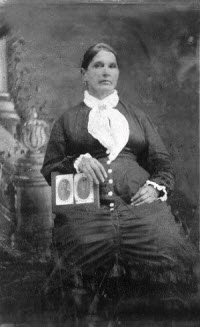Annotation:Quindaro Hornpipe: Difference between revisions
No edit summary |
No edit summary |
||
| (5 intermediate revisions by 2 users not shown) | |||
| Line 1: | Line 1: | ||
{{TuneAnnotation | |||
|f_tune_annotation_title=https://tunearch.org/wiki/Annotation:Quindaro_Hornpipe > | |||
|f_annotation='''QUINDARO HORNPIPE.''' AKA - "[[Quindaro]]," “[[Qumdaro]].” AKA and see "[[Boston Fancy (2)]]," "[[Richard's Hornpipe (1)]]," "[[Richardson's Hornpipe]]." American, English, Scottish; Hornpipe or (seldom) Reel. USA, New England. G Major. Standard tuning (fiddle). AABB (most versions): AA'BB (Kerr). New York City writer, researcher and musician Don Meade finds the tune was named for a Kansas town founded by abolitionists in 1856, and subsequently abandoned. New Hampshire fiddler Randy Miller expands on the origins of the name: | |||
'''QUINDARO HORNPIPE.''' AKA - "[[Quindaro]]," “[[Qumdaro]].” AKA and see "[[Boston Fancy (2)]]." American, Scottish; Hornpipe or (seldom) Reel. USA, New England. G Major. Standard tuning (fiddle). AABB (most versions): AA'BB (Kerr). New York City writer, researcher and musician Don Meade finds the tune was named for a Kansas town founded by abolitionists in 1856, and subsequently abandoned. New Hampshire fiddler Randy Miller expands on the origins of the name: | |||
[[File:quindarobrown.jpg|300px|thumb|left|Quindaro Brown]] | [[File:quindarobrown.jpg|300px|thumb|left|Quindaro Brown]] | ||
<blockquote> | <blockquote> | ||
| Line 13: | Line 12: | ||
''Places in 2002. The tune seems to commemorate the town and its namesake.'' ... [Randy Miller, Monadnock Folklore Society webpage, 2008] [http://www.monadnockfolk.org/?p=367]. | ''Places in 2002. The tune seems to commemorate the town and its namesake.'' ... [Randy Miller, Monadnock Folklore Society webpage, 2008] [http://www.monadnockfolk.org/?p=367]. | ||
</blockquote> | </blockquote> | ||
Burchenal prints it as a tune for the dance "Boston Fancy." See also the similar “[[Douglas Hornpipe]].” Seattle musician, entrepreneur and researcher Vivian Williams finds a slightly different version appears under the name "[[Fanny's Delight]]" in '''Saunders School for the Violin''' (Providence, R.I., 1847). | Burchenal prints it as a tune for the dance "Boston Fancy." See also the similar “[[Douglas Hornpipe]].” Seattle musician, entrepreneur and researcher Vivian Williams finds a slightly different version appears under the name "[[Fanny's Delight (2)]]" in '''Saunders School for the Violin''' (Providence, R.I., 1847). However, the earliest version of the tune is in W. Blackman's '''A Selection of the Most Favorite Hornpipes for the Violin''' (London, c. 1810-22), where it appears as "[[Richard's Hornpipe (1)]]." | ||
|f_source_for_notated_version=fiddler Pete Sutherland (Vt) [Phillips]. | |||
|f_printed_sources=Burchenal ('''American Country Dances, vol. 1'''), 1918; pp. 39-40 (appears as "Boston Fancy" [2]). Cole ('''1000 Fiddle Tunes'''), 1940; p. 104. Ford ('''Traditional Music in America'''), 1940; p. 117. Kerr ('''Merry Melodies, vol. 2'''), c. 1880's; No. 367, p. 40 (appears as "Qumdaro"). Kerr ('''Merry Melodies for the Piano'''), p. 28. Miller & Perron ('''New England Fiddler’s Repertoire'''), 1983; No. 120. Phillips ('''Traditional American Fiddle Tunes, vol. 2'''), 1995; p. 217. '''Ryan’s Mammoth Collection''', 1883; p. 139. Songer ('''Portland Collection'''), 1997; p. 163. Spadaro ('''10 Cents a Dance'''), 1980; p. 41. Tolman ('''The Nelson Music Collection'''), 1969; p. 13. '''White’s Unique Collection''', 1896; No. 135, p. 24. | |||
|f_recorded_sources=Biograph 6007, Ebenezer - "Tell It To Me." Whistler’s Music 9859, Sarah Bauhan - “Chasing the New Moon” (1991). | |||
|f_see_also_listing=Jane Keefer's Folk Music Index: An Index to Recorded Sources [http://www.ibiblio.org/keefer/q01.htm#Quiho]<br> | |||
'' | }} | ||
------------- | |||
Jane Keefer's Folk Music Index: An Index to Recorded Sources [http://www.ibiblio.org/keefer/q01.htm#Quiho]<br> | |||
---- | |||
Latest revision as of 01:53, 14 December 2022
X:1 T:Quindaro Hornpipe L:1/8 M:C| K:G gf|g2G2G2BG|FA DF G2Bc|dB ed cB AG|FG AF D2gf| g2G2G2BG|FA DF G2AB|ce dc BA GF|G2B2G2:| |:dc|Bg Bc d2cB|ca AB c2BA|Bd ed cB AG|FA D2D2ga| bg fg dg fg|bg fg dg fg|ed cB AG FA|G2B2G2:|]
QUINDARO HORNPIPE. AKA - "Quindaro," “Qumdaro.” AKA and see "Boston Fancy (2)," "Richard's Hornpipe (1)," "Richardson's Hornpipe." American, English, Scottish; Hornpipe or (seldom) Reel. USA, New England. G Major. Standard tuning (fiddle). AABB (most versions): AA'BB (Kerr). New York City writer, researcher and musician Don Meade finds the tune was named for a Kansas town founded by abolitionists in 1856, and subsequently abandoned. New Hampshire fiddler Randy Miller expands on the origins of the name:

Quindaro Brown was the daughter of Adam Brown, a Chief of the Ohio Wyandot Tribe. In traditional Wyandot, “Quindaro” refers to the leadership role of a first born daughter; it is “also a word that some interpret by the adage ‘In union there is strength.’ At the time of the Wyandot’s forced removal to Kansas in the 1840s, Abelard Guthrie, a U.S. Land Office agent, fell in love with Quindaro Brown and married her. In Kansas, Quindaro was able to convince her tribespeople to sell land to a company for a townsite in present-day Kansas City. The town of Quindaro was the first Free-State port on the Missouri River, an underground railroad site and a temperance town. At the time of its founding in 1856, it was a beacon of hope for anti-slavery advocates in a sea of pro-slavery adherents. The Quindaro townsite was listed on the National Register of Historic Places in 2002. The tune seems to commemorate the town and its namesake. ... [Randy Miller, Monadnock Folklore Society webpage, 2008] [1].
Burchenal prints it as a tune for the dance "Boston Fancy." See also the similar “Douglas Hornpipe.” Seattle musician, entrepreneur and researcher Vivian Williams finds a slightly different version appears under the name "Fanny's Delight (2)" in Saunders School for the Violin (Providence, R.I., 1847). However, the earliest version of the tune is in W. Blackman's A Selection of the Most Favorite Hornpipes for the Violin (London, c. 1810-22), where it appears as "Richard's Hornpipe (1)."

